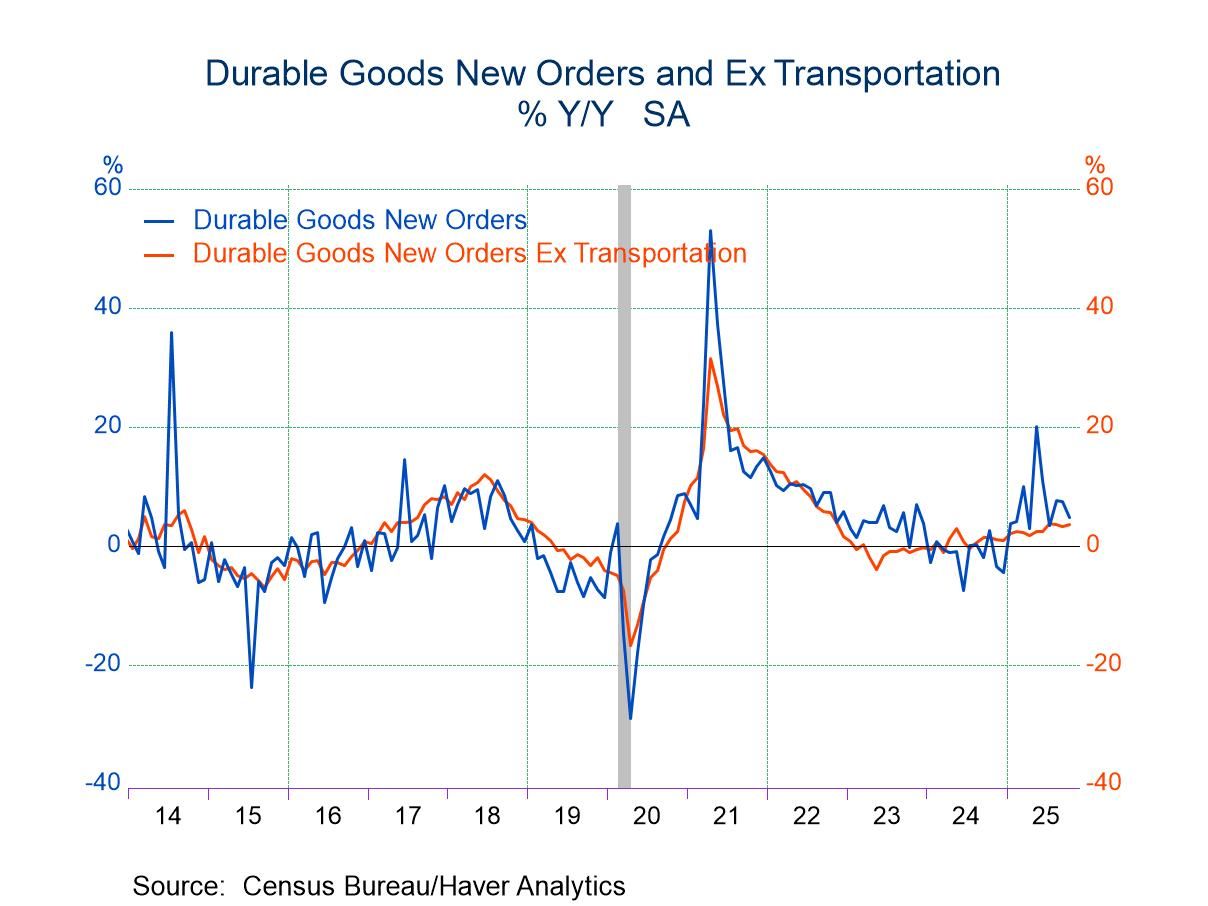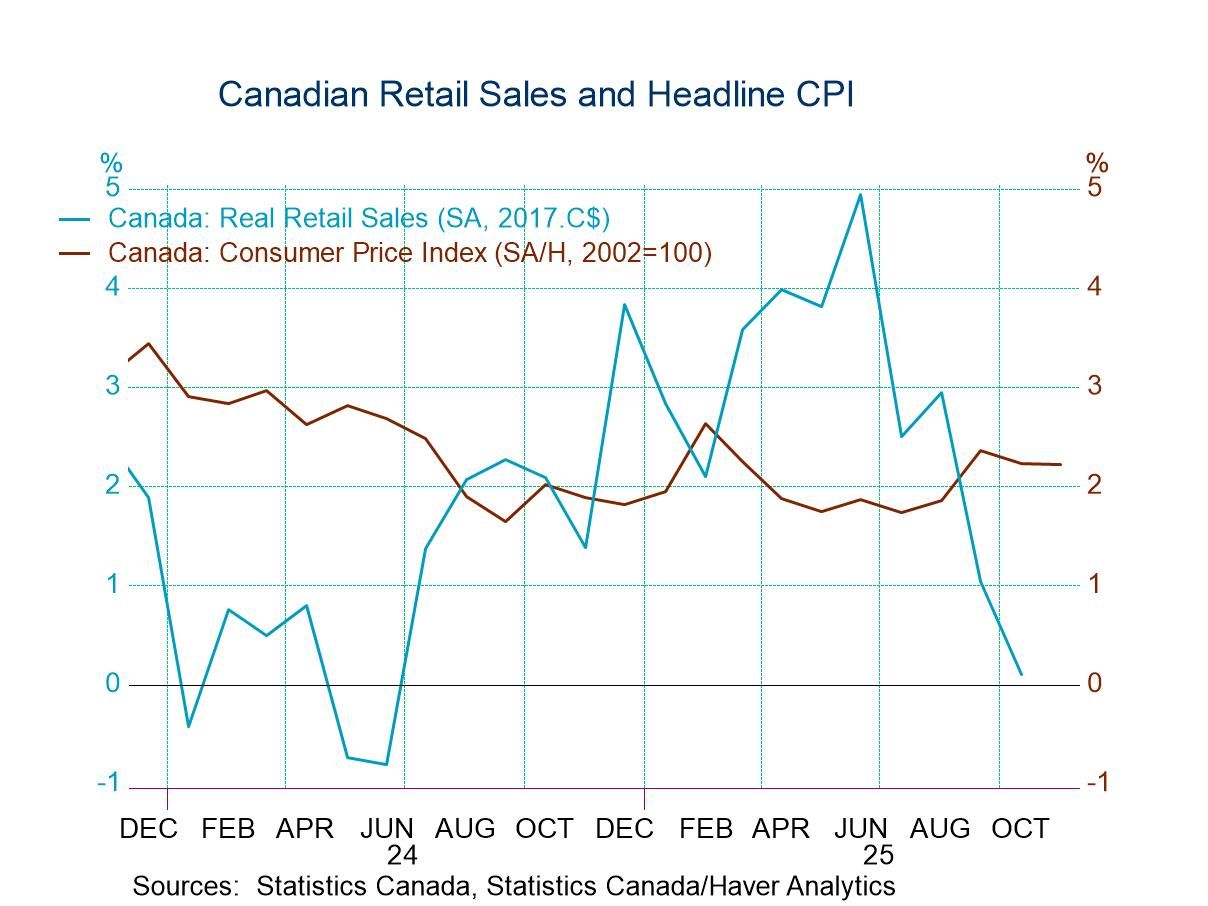 Global| Jan 24 2024
Global| Jan 24 2024Charts of the Week: Lingering Concerns
by:Andrew Cates
|in:Economy in Brief
Summary
Financial markets have taken their cue from company-specific developments in recent days with positive news from the technology sector Ieading the way. Lingering tensions in the Middle East, however, are now affecting shipping costs more adversely (see chart 1) and raising concerns about the durability of global supply chains. Recent commentary and some data points, in the meantime, have also been casting doubts on the willingness of central banks to pivot toward looser monetary policy (see chart 2) notwithstanding the more downbeat messages from manufacturing surveys (chart 3). Over in Asia, this week’s announcement of a forthcoming 50bps cut in reserve requirements is a strong hint that China’s central bank could loosen its policy settings in the coming weeks. Policymakers have certainly appeared more mindful of late about its ailing domestic equity market (see charts 4 and 5). That stands in vivid contrast to Japan, however, where equity markets have climbed to new 33-year highs this week even as the Bank of Japan has been hinting at steps to begin normalizing its monetary policy (chart 6).
Shipping costs The disruption of Red Sea shipping routes is now impacting the cost of shipping goods around the world more forcefully. Latest data from Drewry Shipping Consultants, for example, reveal a big spike in freight rates along key global shipping routes that typically traverse the Red Sea (see chart 1). The cost per 40-foot container from Shanghai to Rotterdam has specifically jumped from $2622 on December 28th to $4951 on January 18th. That stands in contrast to the cost of a container from Rotterdam to New York (which does not traverse the Red Sea) which has remained more-or-less unchanged over the same time frame, at around $1500.
Chart 1: Global container costs on selected global shipping routes

Euro area banking conditions Ahead of this week’s ECB meeting the latest survey of regional banking conditions yielded an unexpected improvement in credit demand. While overall credit demand from businesses and households continued to contract in Q4 2023, the degree of that contraction was much less than in previous quarters. Expectations for loan demand in Q1 2024, moreover, were positive for both consumers and businesses for the first time since H1 2022. Credit standards for both sectors also tightened, but only marginally (see chart 2). Many of the region’s data points that will feed into the ECB’s decision making this week have been painting a negative picture of the economic outlook. But this survey, in isolation, is arguably one for the hawks.
Chart 2: ECB Bank Lending Survey: Credit standards and credit demand indicators

The UK manufacturing sector In contrast to that ECB survey, this week’s UK CBI monthly industrial trends survey carried a more downbeat message. It revealed that conditions in the manufacturing sector deteriorated unexpectedly in January, with output falling and order books at their weakest since the depths of the pandemic. The quarterly survey, released at the same time, revealed weak investment intentions as well largely because of steep increase in domestic financing constraints (see chart 3).
Chart 3: UK CBI Industrial Trends Survey: cost of finance constraints and new orders

Equity markets in China and Japan Poor economic data coupled with the absence to date of a compelling policy response have disappointed equity investors in China over the past few months. The contrast with Japan, where equity markets have been powering ahead to multi-decade highs, could not be starker (see chart 4). Japan’s Nikkei 225 index specifically reached a 33-year high earlier this week while China’s Shanghai composite index slumped to a 4-year low (chart 4).
Chart 4: Japan’s Nikkei 225 index and China’s Shanghai Composite index

China’s economy As noted, China’s disappointing economic performance has magnified market concerns in recent months. But while the spotlight has been on the country’s latest figures for real GDP growth (and other volume-based metrics), the weakness of nominal GDP growth is equally concerning, not least for corporate profitability. Indeed, measured in US dollars, China’s nominal GDP in 2023 Q4 was some 6.4% lower than its level in 2022 Q1.
Chart 5: China’s nominal GDP measured in US dollars

The Bank of Japan The Bank of Japan (BoJ) left its policy settings unchanged this week, as widely expected. The central bank also updated its economic forecasts and sees slightly stronger GDP growth and lower CPI inflation (excluding fresh food) in the year ahead. Regardless, the BoJ noted that the likelihood of realizing its price stability outlook has gradually risen, with some interpreting the remarks as hints at an imminent beginning of policy normalization. Others, however, remain skeptical of substantive BoJ policy moves in the near-term, noting, among other factors, lackluster wage pressures and lingering damage from Japan’s recent earthquakes.
Chart 6: Japan’s CPI inflation, wage growth and assets on the central bank’s balance sheet

Andrew Cates
AuthorMore in Author Profile »Andy Cates joined Haver Analytics as a Senior Economist in 2020. Andy has more than 25 years of experience forecasting the global economic outlook and in assessing the implications for policy settings and financial markets. He has held various senior positions in London in a number of Investment Banks including as Head of Developed Markets Economics at Nomura and as Chief Eurozone Economist at RBS. These followed a spell of 21 years as Senior International Economist at UBS, 5 of which were spent in Singapore. Prior to his time in financial services Andy was a UK economist at HM Treasury in London holding positions in the domestic forecasting and macroeconomic modelling units. He has a BA in Economics from the University of York and an MSc in Economics and Econometrics from the University of Southampton.






